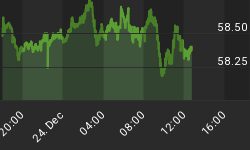The Federal Reserve keeps thorough records of U.S. consumer credit, and most of the data goes back 30 years or longer. They put it all on the Internet, too. Scroll through the numbers, and before long you'll have what amounts to a crash course in how rapidly the debt levels have grown during just one generation.
New car loans, for instance: In June 1971, the total amount financed averaged $3045 for 35 months. Fast forward to Nov. 2004, and the amount financed averaged $23,984 over 60.5 months.
But that's just for starters. To see what real growth in the debt levels looks like, "revolving credit" (also known as credit card debt) is the place to look.
The Fed began keeping records on revolving credit in January 1968; the outstanding amount in that month was $1.4 billion. Jump a little more than five years ahead and you come to the first month that revolving credit exceeded ten billion, $10.2 in June 1973. Barely eleven years later came the one hundred billion threshold, $106.26 in December 1984. Near the end of 2004 (November), revolving credit stood at $782.15 billion.
That's a whole lotta credit card debt. As you scroll the data, you do occasionally notice a marginal decrease in the monthly debt figures, but "more" and "bigger" is the rule....
.... until November's number, that is. As large as $782 billion sounds, it's actually an 11% annual rate decline from October, the single largest one-month drop since the Fed began keeping records in 1968.
Now, this data is always subject to "revision," and one month does not a trend make. That said, it's amazing to me that a decline of this magnitude received so little coverage in the financial press. December's number was well below the usual increase for that month.
Credit card debt can keep growing explosively for years or even decades... until it doesn't. And "doesn't" is exactly what no one expects, let alone prepares for.
















